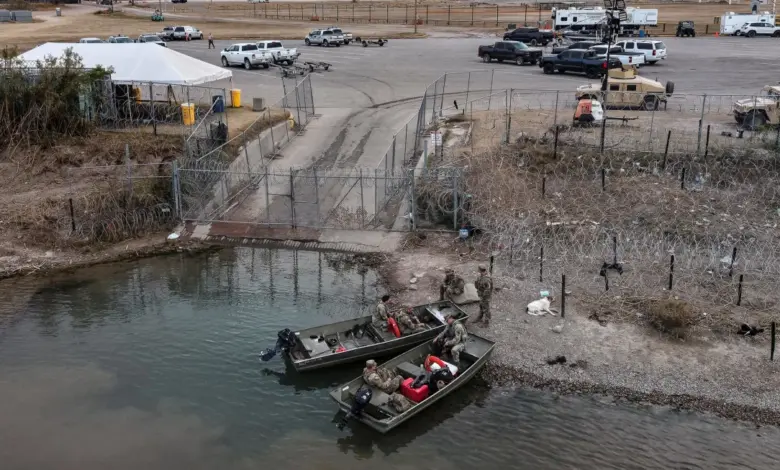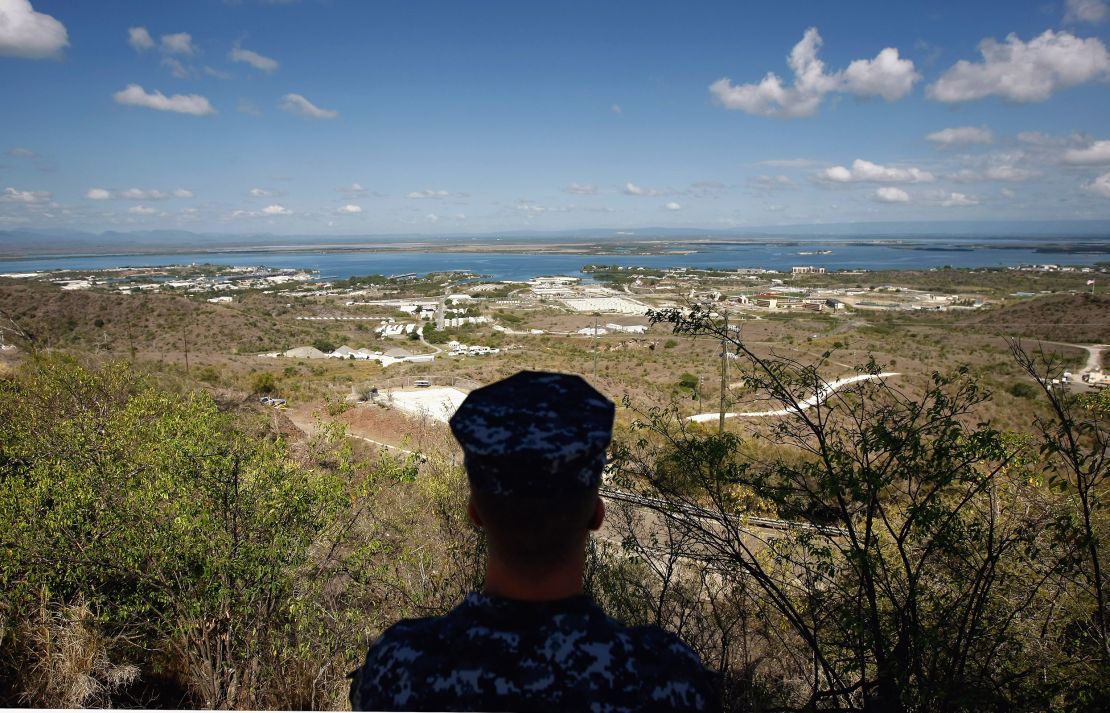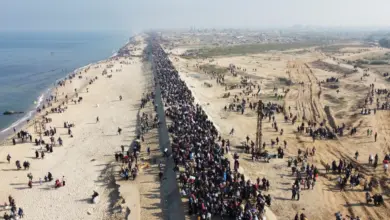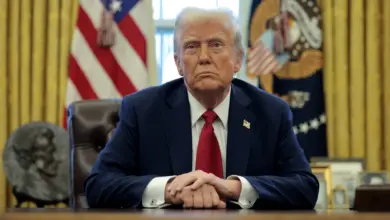
The administration has sent troops to the US-Mexico border, utilized military aircraft to repatriate recent border crossers, and deployed people from multiple federal agencies, including those under the Justice Department, to augment immigration enforcement operations. Those shifts may cause tensions between agencies, as they compete for limited resources and manpower.
The administration is also drawing up plans to expand the government’s holding capacity, turning to military bases and Guantanamo Bay, Cuba. And private contractors are discussing options amongst themselves as they look to ramp up detention capacity.
“This gets them over one of the biggest hurdles they have which is resources,” said John Sandweg, former acting ICE director under the Obama administration, noting that getting additional funds from Congress will take time.
“By elevating this to a national security priority, tapping into DOD’s abundant resources and DOJ with the federal agents, it’s an immediate surge of resources,” he added.
The Trump administration is also expected to tap state and local law enforcement in the weeks to come to assist in their efforts to arrest undocumented immigrants. Combined, the efforts mark a dramatic scaling up of the administration’s enforcement apparatus and reflect Trump’s aggressive immigration agenda.
White House deputy chief of staff for policy Stephen Miller told CNN’s Jake Tapper Tuesday that arrest quotas for Immigration and Customs Enforcement field offices of 75 per day should be treated as a “floor, not a ceiling.”
“The goal is to arrest at least that many, but hopefully many more, and the Department of Justice is going to be closely involved in providing the manpower to help achieve those objectives,” Miller said.
‘A force multiplier’
US Customs and Border Protection has also been called upon to assist ICE, as the latter agency’s field offices come under increasing pressure, according to multiple sources.
Interior enforcement is complex, often requiring careful planning, surveillance and operations that take place in the predawn hours. Over the course of the past week, teams of ICE officers, along with agents from the Drug Enforcement Administration and Bureau of Alcohol, Tobacco, Firearms and Explosives, deployed nationwide to arrest undocumented immigrants who had been targeted as public safety and national security threats, according to Trump officials.
In an interview with CNN last week, White House border czar Tom Homan touted the joint effort, calling it a “gamechanger,” and describing the teams as a “force multiplier.”
ICE has historically been underfunded and has a limited number of agents. Trump officials were keenly aware of that as they prepared in the weeks leading up to Inauguration Day, drafting a spate of memos to delegate powers and trigger authorities, according to two sources familiar.
One of those included a Homeland Security memo requesting the help of state and local governments to enforce federal immigration law, citing a “mass influx” of migrants at the US-Mexico border. That language was deliberate, according to one of the sources, describing the finding as a tool to trigger new state authorities for immigration enforcement.
The memo allows state and local law enforcement officers to carry out immigration enforcement, by invoking a sweeping legal authority that lets the Homeland Security secretary request aid under certain circumstances. It’s unclear how it would be implemented and whether it will require agreements and training.
Some former Homeland Security officials have raised concerns over pivoting law enforcement to immigration-focused missions and potentially leaving other work unattended.
“They clearly can do it. But there’s an opportunity cost. What aren’t they going to do?” one former Homeland Security official said.
Enlisting the military
One of the president’s first acts, declaring a national emergency at the border, has already yielded action that was prominently showcased by the White House: the use of Pentagon assets on the US southern border.
The administration expanded its military flights carrying migrants to Ecuador last week, after a public feud with Colombia that almost resulted in a trade war. And at the request of the Department of Homeland Security, Buckley Space Force Base in Colorado will be used to stage and process immigrants. The facility is manned by ICE, among other agencies.
“This is only just the beginning,” Defense Secretary Pete Hegseth said in a post on X Monday.
Trump on Wednesday signed a memorandum directing the federal government to prepare the US Naval Base at Guantanamo Bay, Cuba, to house migrants. The process of expanding the holding facility is expected to last weeks and likely to fall short of Trump’s stated goal of 30,000 people, given space constraints.

Guantanamo Bay hosts a separate migrant processing center previously used to temporarily house migrants apprehended at sea.
Under the Biden administration, Homeland Security officials considered using the center to temporarily hold more migrants in the event of mass maritime migration. The process to expand capacity was expected to take around 30 days, depending on what assistance could be pulled in and how quickly, according to a former Homeland Security official.
Trump’s top immigration advisers previously told CNN that management of a Guantanamo Bay detention facility for migrants would be overseen by ICE and reserved for what Homeland Security Secretary Kristi Noem described as “the worst of the worst.”
Homan told CNN Wednesday that he wants the Defense Department to be “very involved” in immigration enforcement
Pressed on how much more money he thinks Congress would need to allocate to fully carry out Trump’s immigration plans, Homan said that they are “working on that number now.”
“We need – the more money we have, the more successful we’re going to be, right? More money for beds, more money for operations,” he said.




